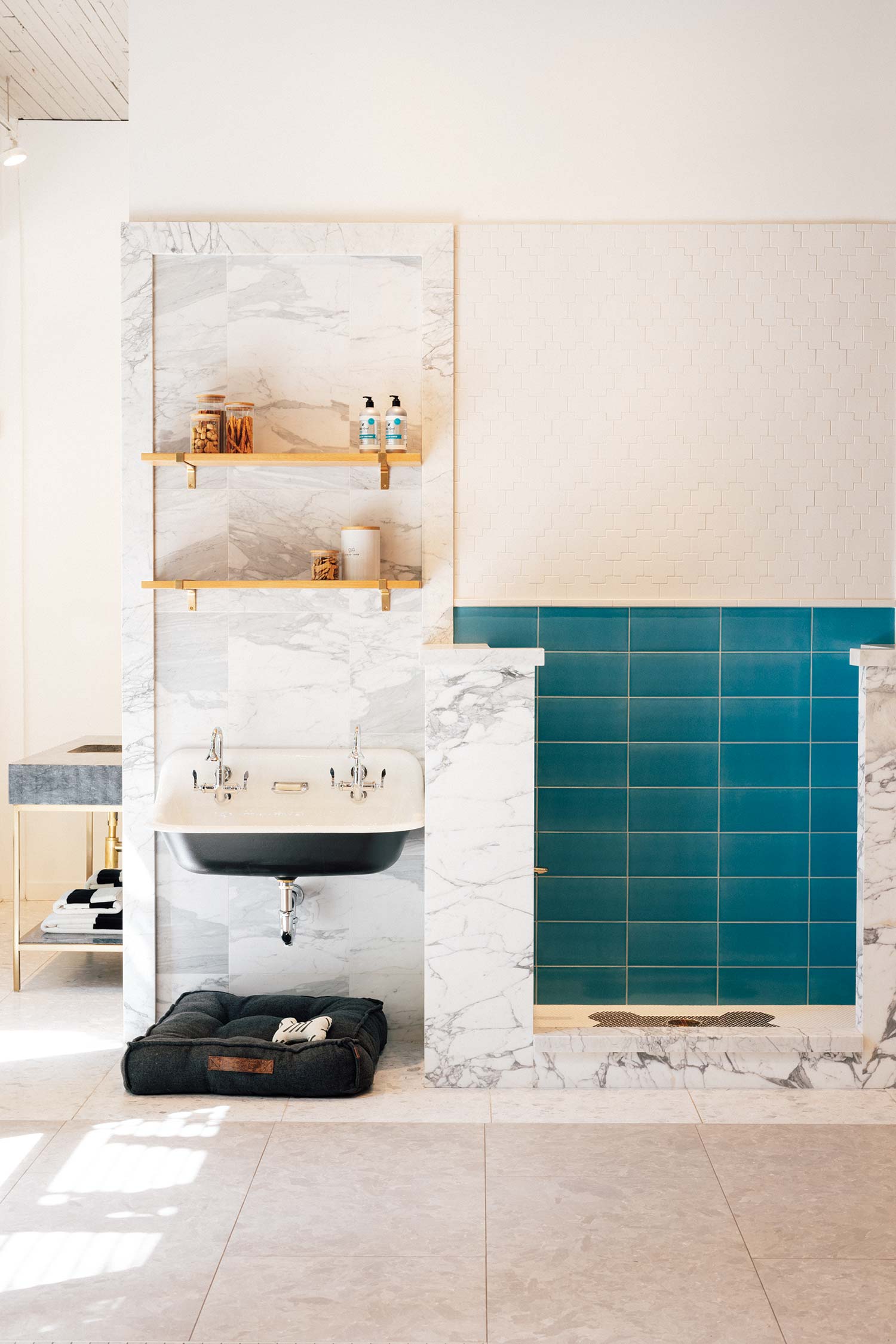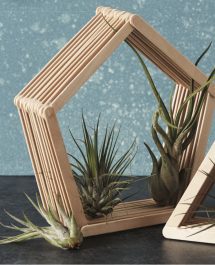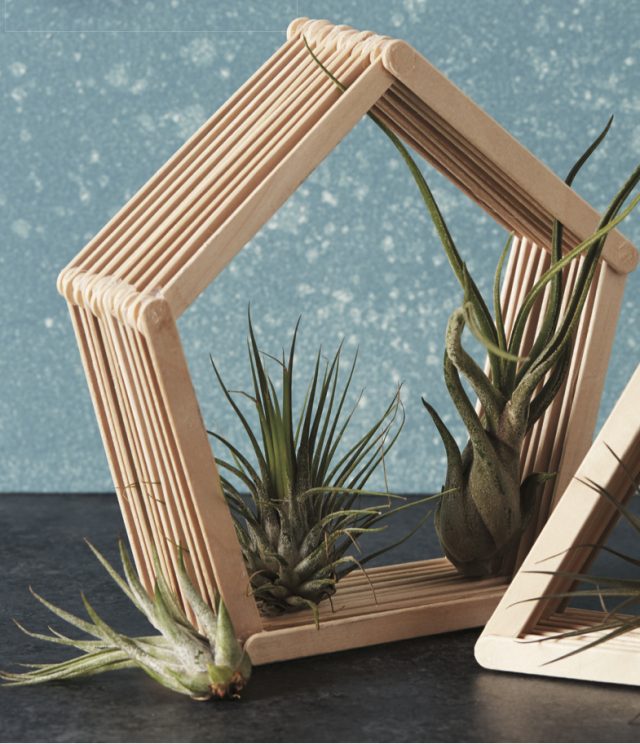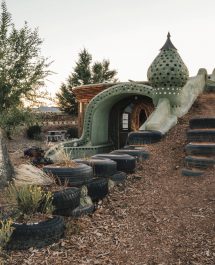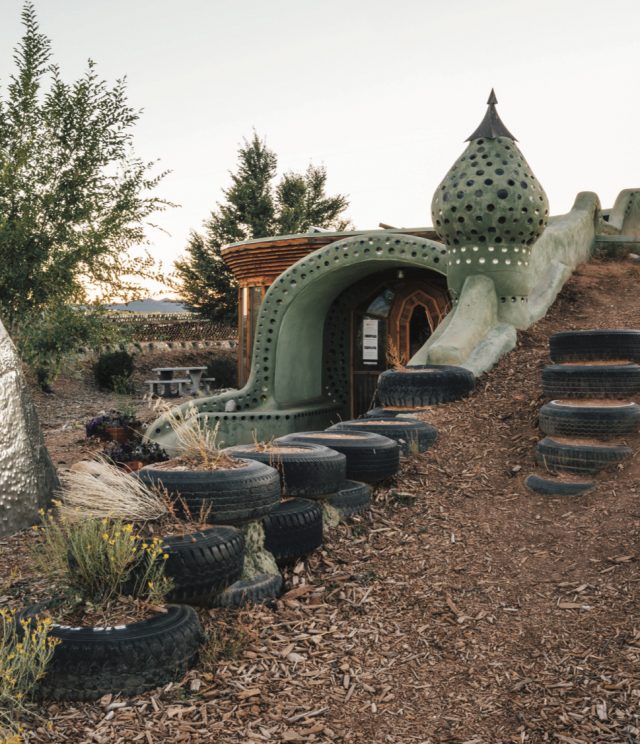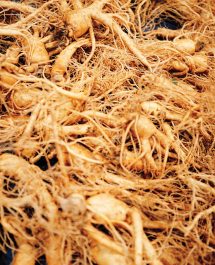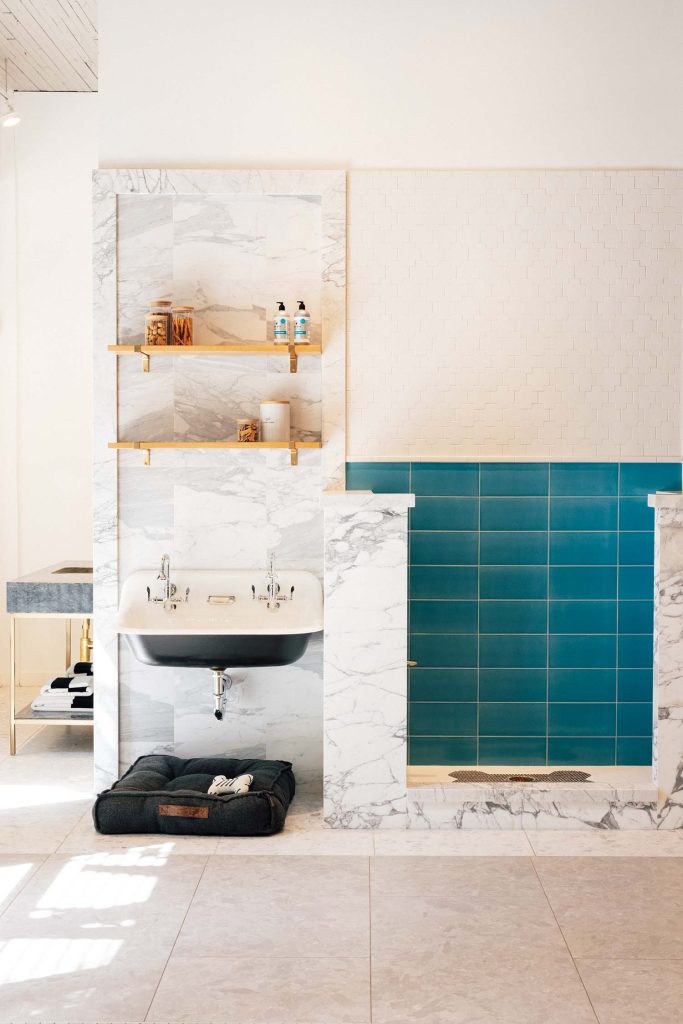
STORY BY SHELBY DEERING ✷ PHOTOGRAPHS BY JONAS JUNGBLUT
There are some brands you can always identify in photos splashed across the pages of glossy home magazines. For the interior-design focused, it’s easy to spy those pieces that have become designer darlings, like a Jonathan Adler vase or a Herman Miller chair. But when it comes to tile, one name comes up again and again in high-profile homes—Ann Sacks.
While celebrities like Neil Patrick Harris and design hotshots such as Max Humphrey and Jean Stoffer have included the tile in their homes and designs, the now-famous brand hails from surprisingly humble beginnings.
It was back in 1980, as the story goes, that Ann Sacks was perusing a Mexican market and spotted earthenware Talavera tiles being sold as trivets. It was enough to stoke her inspiration, and she went home to Portland, Oregon to start her eponymous company in her small bungalow. The very next year, Ann opened her first showroom, with a focus on tile that celebrates Mexican hand glazes. The brand continued to fire up throughout the 1980s.
Shortly thereafter, in 1994, DeeDee Gundberg started a job at Ann Sacks as an administrative assistant in the Portland showroom. Now Ann Sacks’ Chief Designer, she also knows a thing or two about humble beginnings. She next worked as a sales associate for nearly four years, and then moved to the corporate office as Ann’s assistant, “where I learned every aspect of the business,” she says.
When Ann retired in 2003, DeeDee took on a larger role in product development, which she has helmed ever since. “Ultimately, I am responsible for the creative direction and development of our assortment as well as the design and build of our showrooms and slab galleries,” she explains.
In other words, she’s the one you can thank for all those gorgeous tile designs and equally stunning showrooms. The brand has come to be known for decidedly modern-looking tiles in a variety of colors and materials, from ceramic to marble to concrete to terra cotta. They also purvey designer lines from the likes of Kelly Wearstler and Robert Kuo.
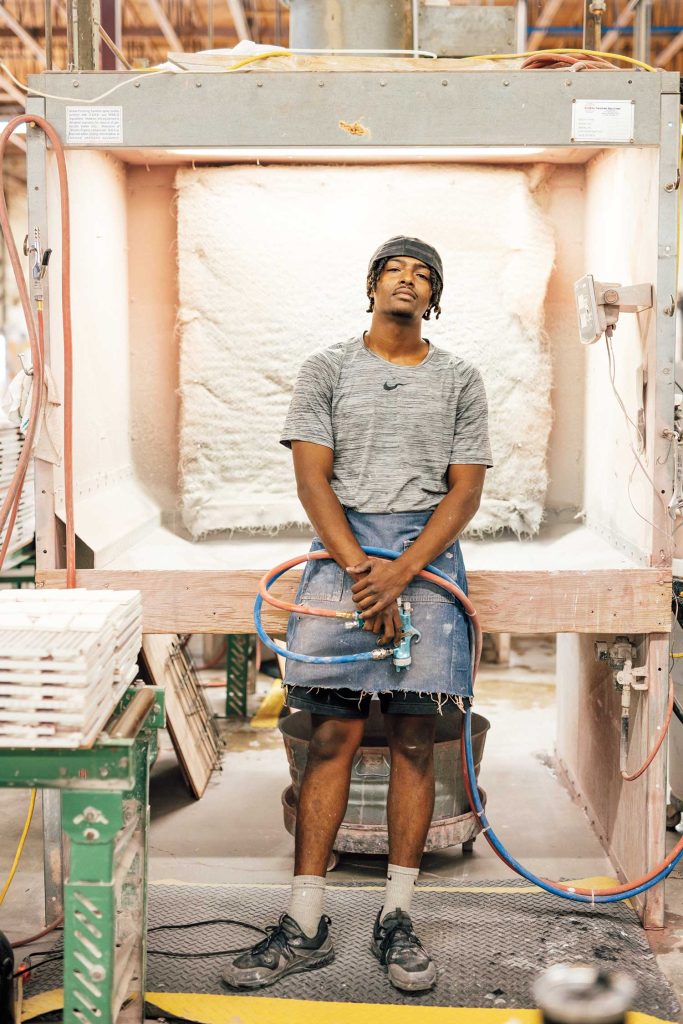
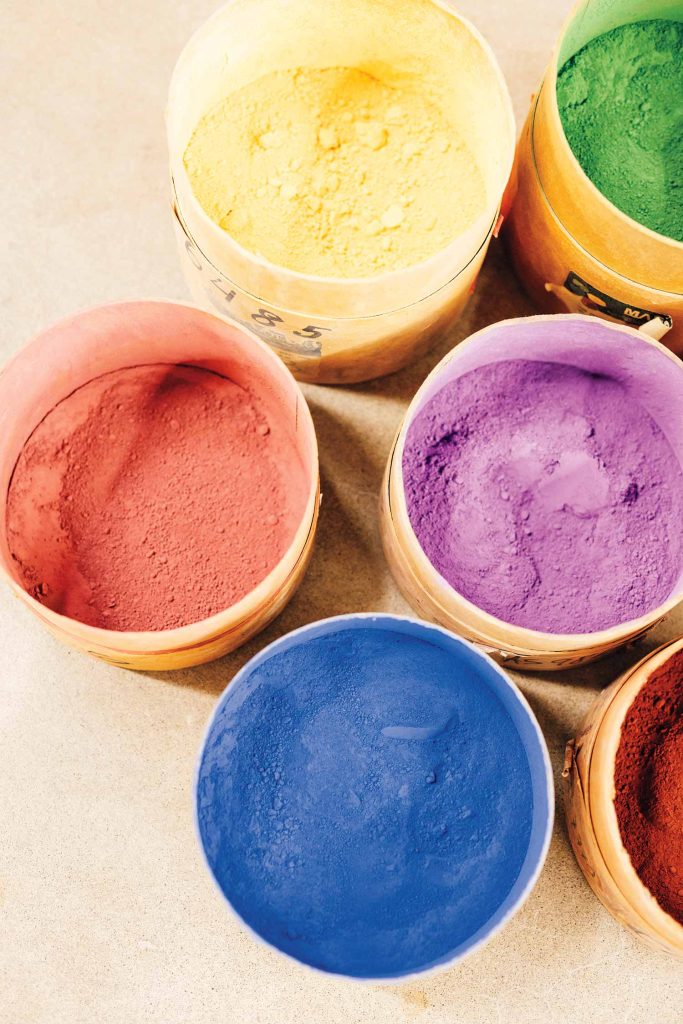
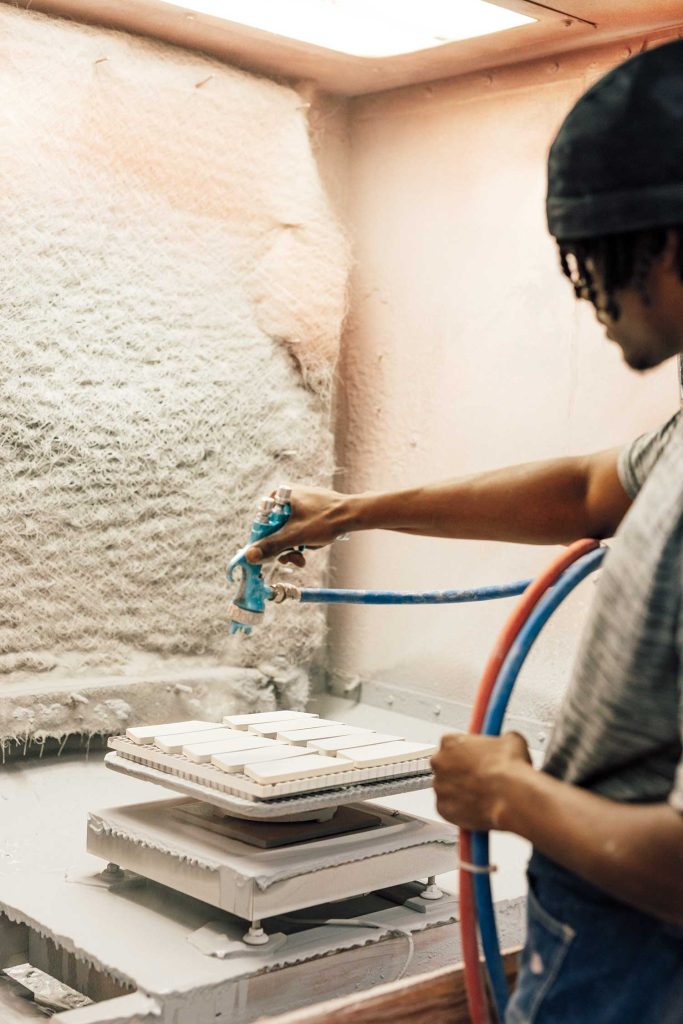
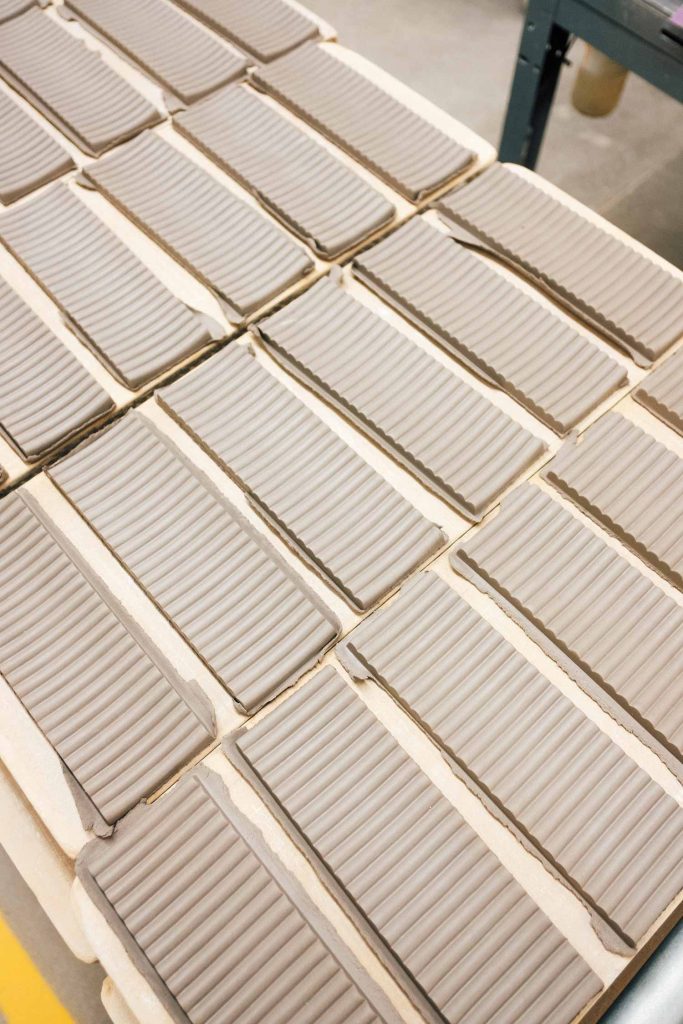
But how does it all get crafted, from start to finish? As they say, their MADE by Ann Sacks tiles are created by hand in their Portland factory using techniques that certainly aren’t used by the big-box guys.
But it starts with an initial idea that bubbles up from design research. “I am constantly looking at current trends in the market always with an eye toward what might apply to our product line,” DeeDee says. “I try not to engage in trendy trends, but rather trends that have staying power or can influence timeless design.”
“Our tiles are extruded or pressed, and during the production process, the human hand touches each tile up to nine times.”
When DeeDee gets an idea of what she wants, she takes it to the very talented team at the MADE factory to figure out how to convert her concept into a tile. “Aside from just understanding what the repeat will be and how the pattern will connect, we also need to think about more technical aspects like thickness, weak points, line weight, how the glaze will break, and how the mold will release the clay,” she says. “We create prototypes in clay or plaster, which is one of the most important steps because it gives us the opportunity to look at scale, texture, and line depth to make sure it’s working.”
At this point, the team creates what’s called rubber positives so they can press the design. Once pressed, they glaze the tile in several different glazes (including gloss, matte, translucent, opaque, and interactive) so that they understand how each glaze type will react on the pattern.
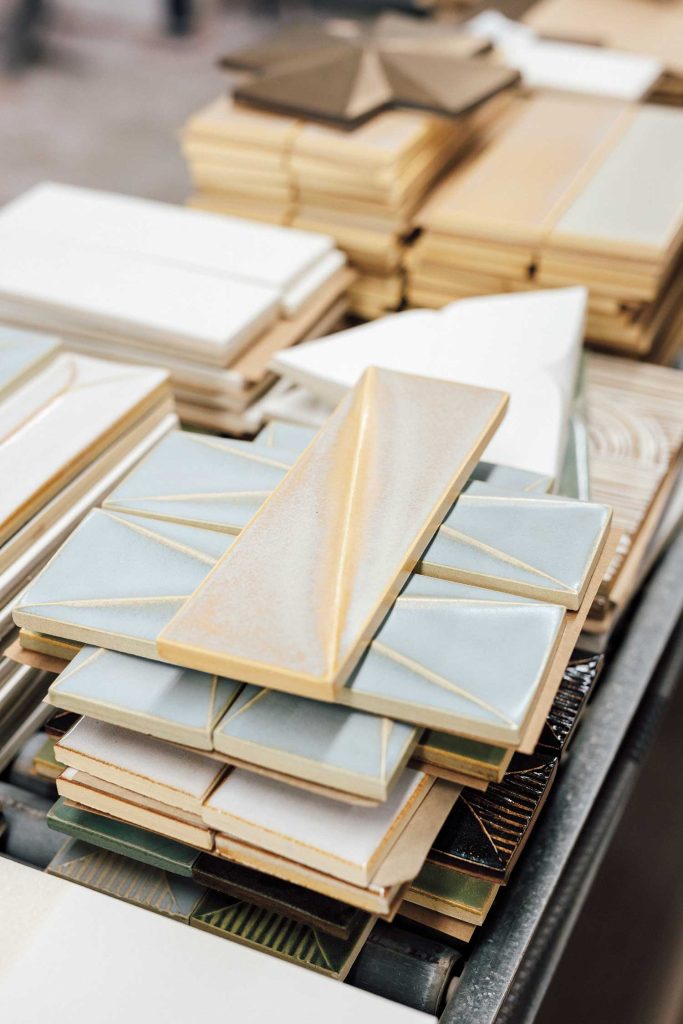
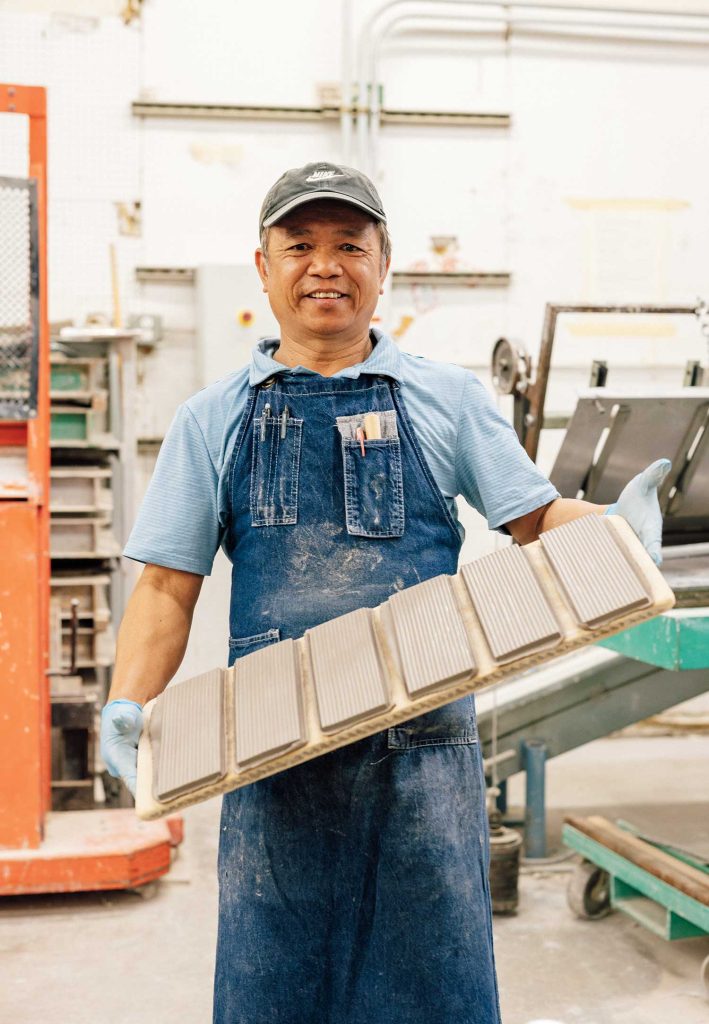
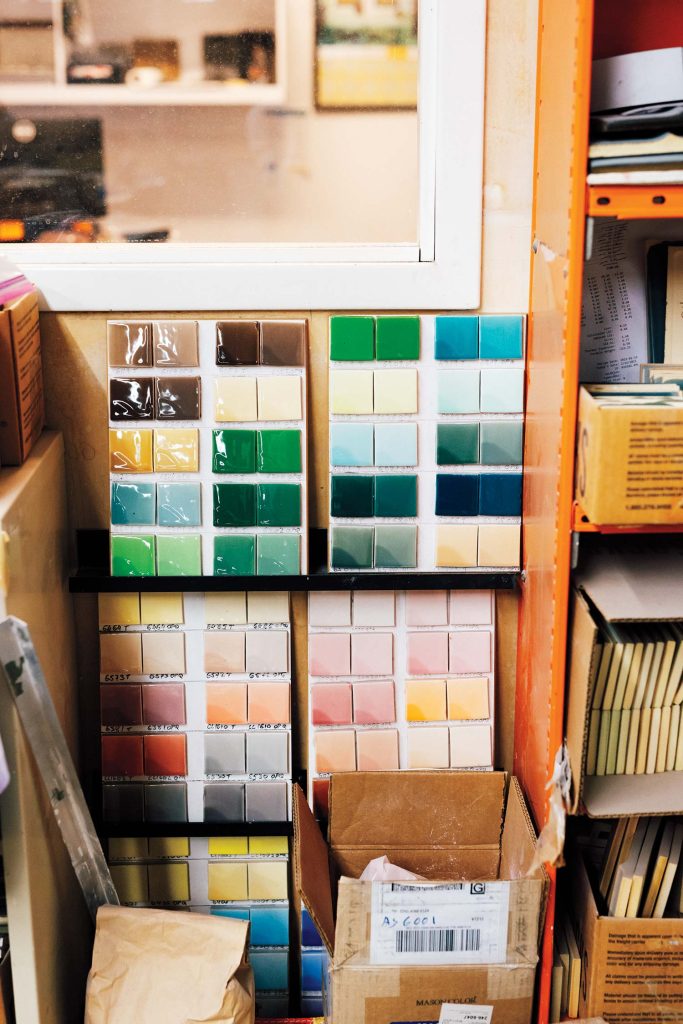
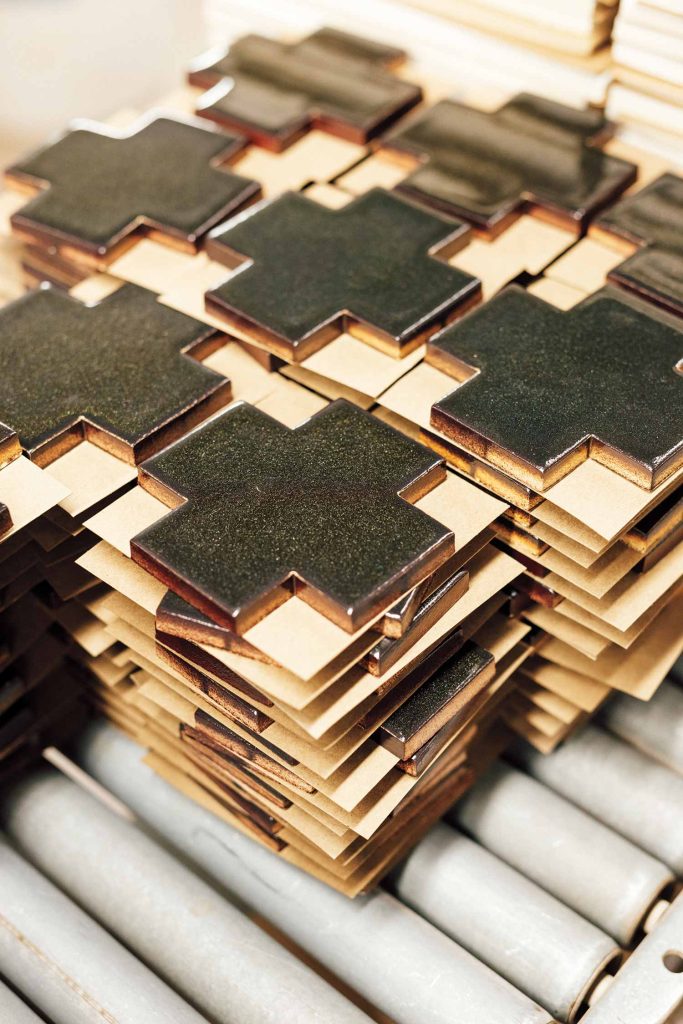
After the design stage, the team moves on to manufacturing. “Our tiles are extruded or pressed and, during the production process, the human hand touches each tile up to nine times,” DeeDee says. “Everything from mixing glazes to hand trimming, hand sanding, hand spraying. So, the process is very handcrafted and you can see this in the finished product.”
While the company is certainly true to its roots, with a focus on handcrafted products still manufactured in Portland after all these years, Ann Sacks moves forward as well. For instance, though they adhere to predominantly timeless looks, trends do make their way into their product lines. DeeDee says that plaster is a huge trend right now, and there are textured dimensional plasters that are the basis of their Senso collection with Kelly Wearstler, which just launched in fall.
They’re also developing strong, sustainable practices. “Sustainability is very important to Ann Sacks and to Kohler, our parent company,” DeeDee says. “In addition to sourcing more products with recycled content, our MADE factory is looking to reduce clay usage on parts, to use salvage and reuse defective products, and reduce glaze consumption with more efficient equipment.”
With 19 showrooms, including the London showroom where Kate Middleton has been spotted admiring terra-cotta flooring, DeeDee says that the company has “a very aggressive showroom expansion plan for the next few years.” So keep an eye out, they might be in your neck of the woods before you know it.
Though DeeDee calls this “an exciting time of growth,” they’ll always be happiest at their base in Portland. “Ann Sacks started this business in Portland, and it’s been our home ever since,” she says. “Portland is a city that values craft and innovation, and it has an authenticity and energy that is palpable. It’s the perfect place for us.”
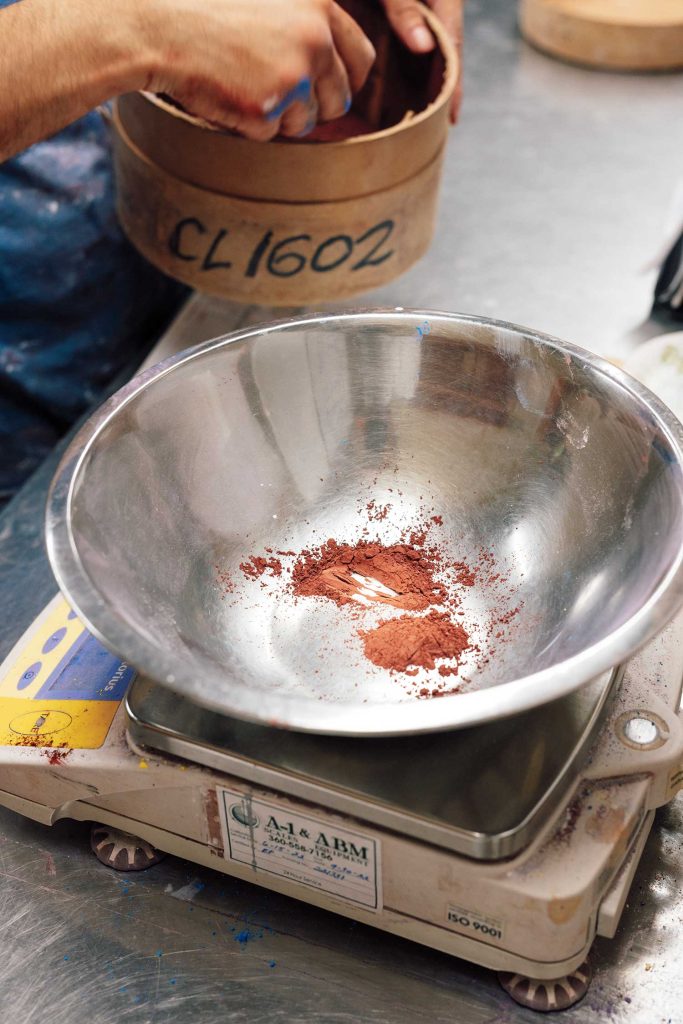
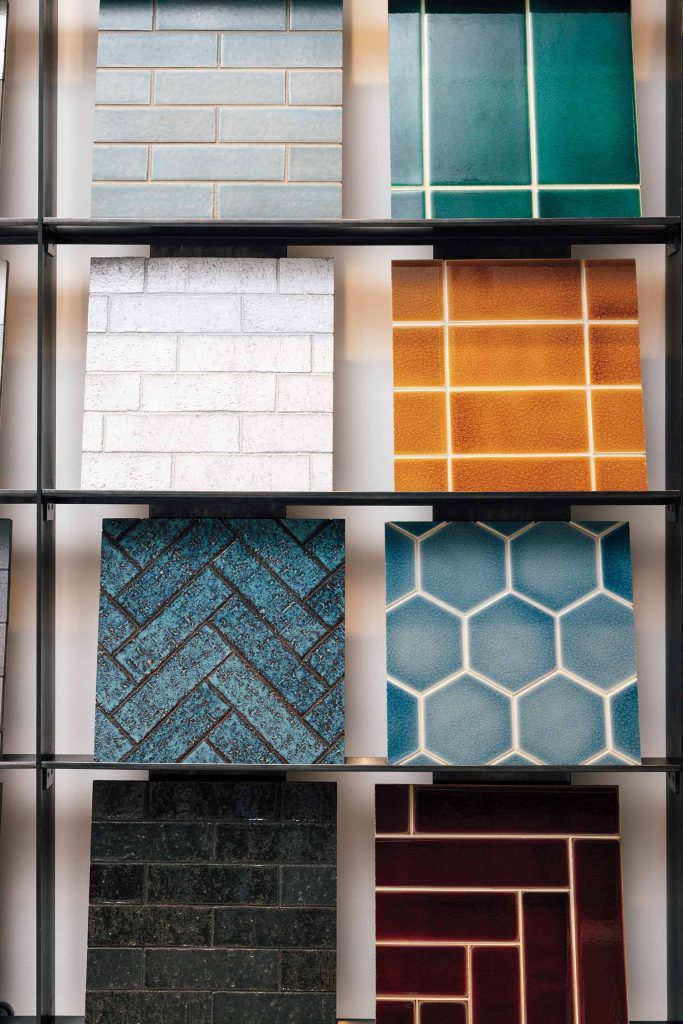
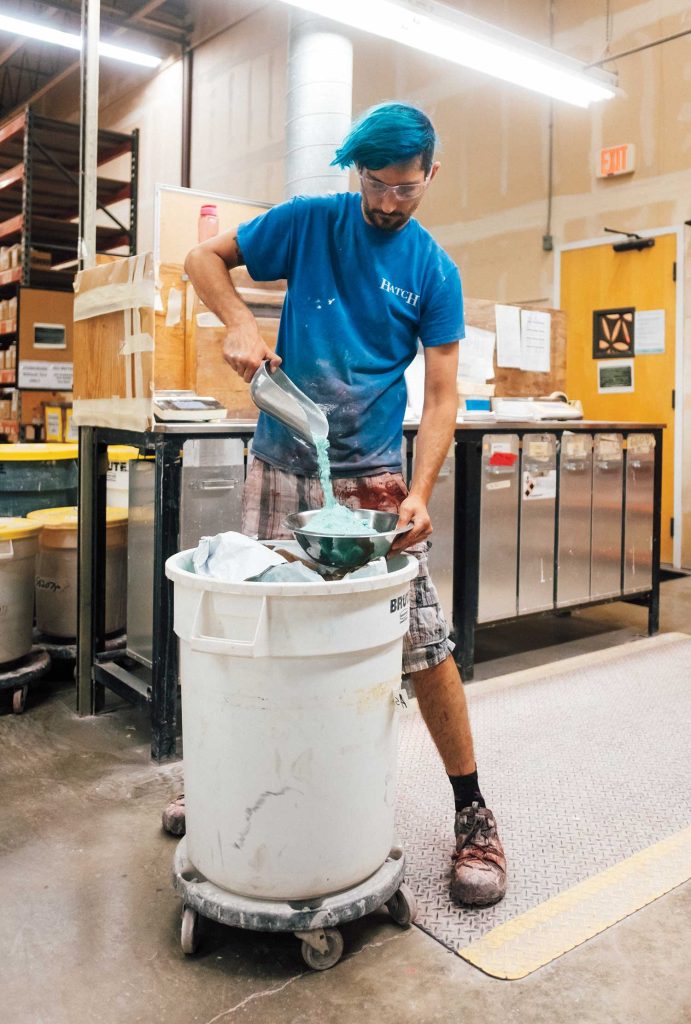


Choose Tile the Ann Sacks Way
Choosing tile for a home isn’t for the faint of heart. There are many things to consider, from design aesthetic to functionality. DeeDee Gundberg offers four tips to remove some of the guesswork:
1
Install what you love. Don’t worry about what is popular or trending since you will live with your selection for many years. While heavily veined and colorful stones are trending now, classic white marbles have been on the hot list for over a decade and are still strong. And while popular tile formats are constantly changing, one can never go wrong with the classic 3- x 6-inch subway.
2
Consider usage recommendations. Make sure that the product that you select is deemed suitable for the environment by the manufacturer. For instance, you may fall in love with a crackle glaze for your shower, but crackle glazes are literally cracked, which means that water can penetrate the surface. Save the crackle for behind the vanity and use a non-crackled surface for wet areas.
3
Decide what role you want your tile to play in your space. Tile can be a dramatic feature, or it can be a subtle background surface. There are a variety of show-stopping textures, patterns, and colors that create a ‘wow’ moment—just make sure that you also create spaces for the eye to rest.
4
Understand the care and maintenance of a tile. And be prepared to follow those instructions so that your selection looks beautiful for years to come. For instance, stone is used extensively as a surface material, but it needs routine sealing in order to look and perform at its best. A kitchen counter will need to be sealed more often than a fireplace surround due to use.

